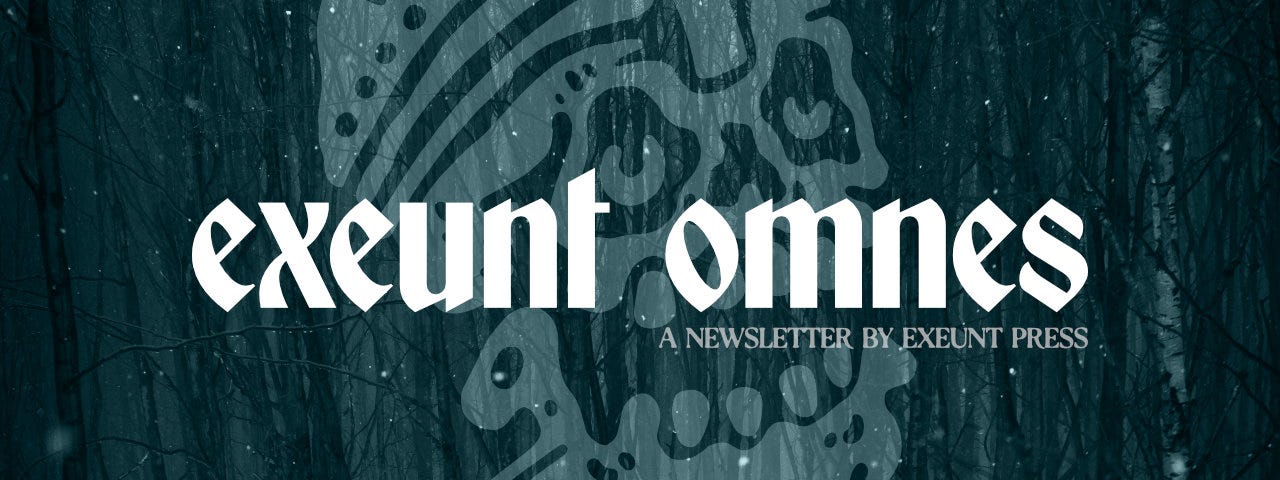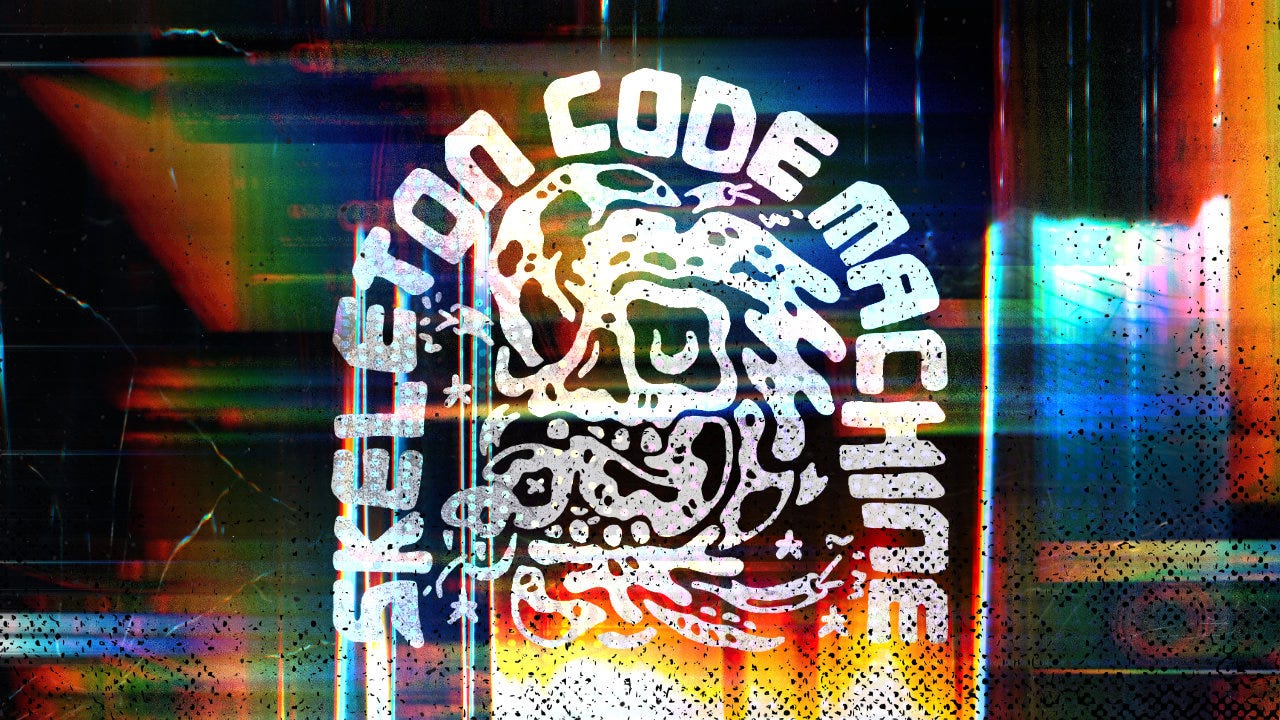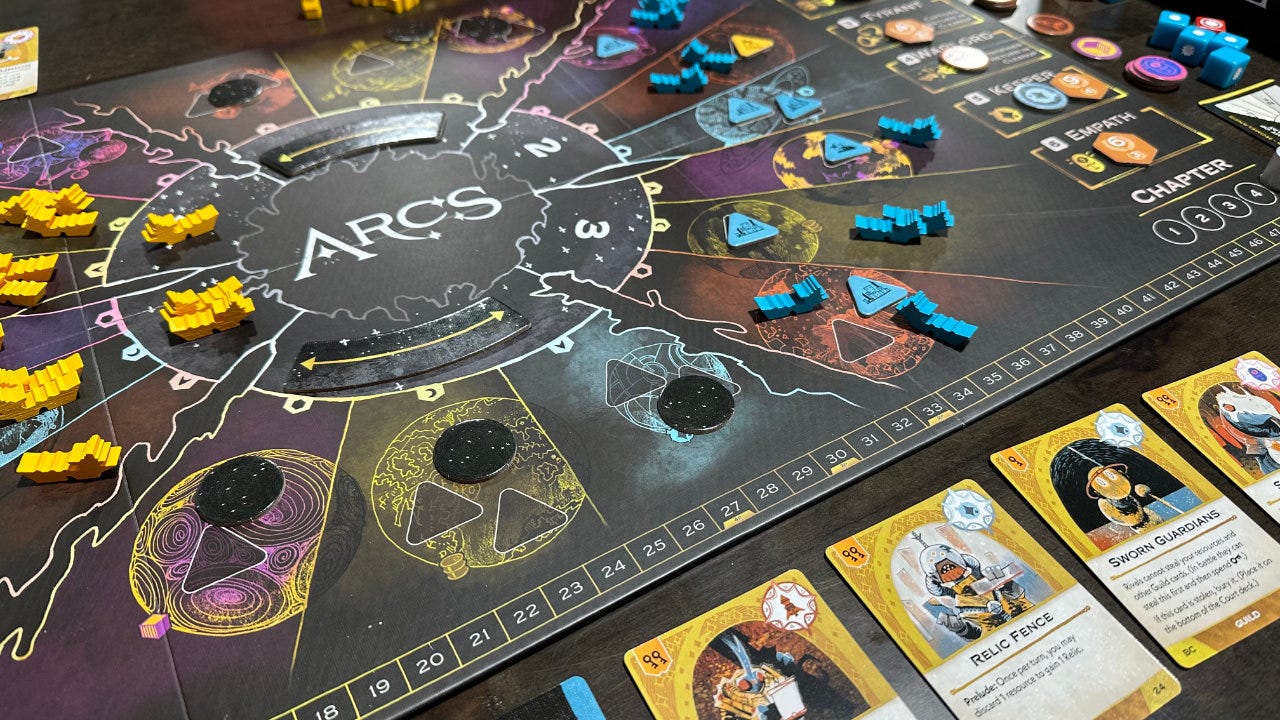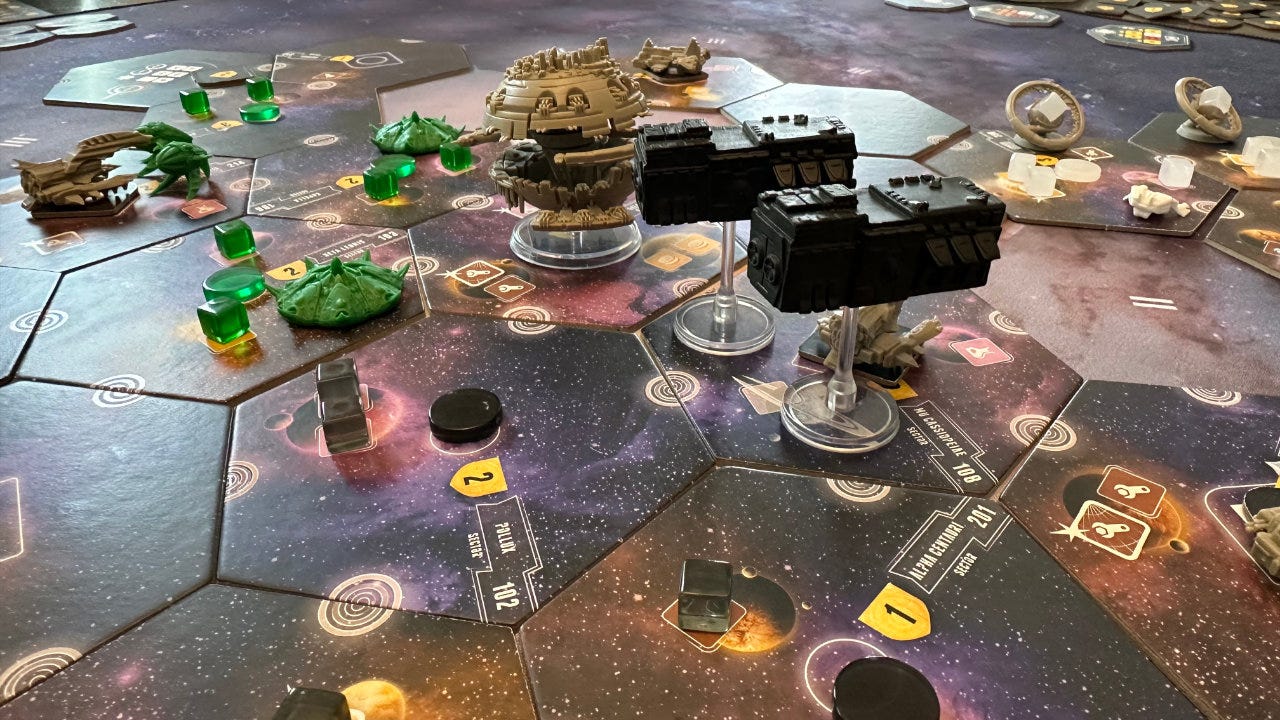What is a wargame? And does it matter?
CRIT Award voting, Best of Skeleton Code Machine, Wargames, and Eclipse
Welcome to Exeunt Omnes, the official newsletter for loyal fans and sworn enemies of Exeunt Press, creator of games such as Exclusion Zone Botanist and Eleventh Beast. You can find digital games at games.exeunt.press and physical products at shop.exeunt.press.
TL;DR Summary
🗳️ Nominated for CRIT Award!!!
💀 The Best of Skeleton Code Machine
🪖 What is a wargame?
🎲 Recently played: Eclipse
🗳️ Skeleton Code Machine nominated for CRIT
Skeleton Code Machine has been nominated for a CRIT Award!
The four finalists for Best Blog or Article Written in the TTRPG Space are:
“What does it mean to give players a choice?” by Exeunt Press
“The Harlem Renaissance is here again” by Rowan Zeoli
“Diversity in Paizo’s Pathfinder” by Graeme Barber
“Using TTRPGs to Teach Science and Engineering” by TTRPGKids
The final winner is selected by popular vote. Voting is open now and ends soon on July 7, 2024.
If you enjoy reading Skeleton Code Machine, please vote by clicking here!
VOTE: Round 2 Voting for the CRIT Awards
The Best of Skeleton Code Machine
There are currently 86 posts in the Skeleton Code Machine Archive, with topics ranging from combat to player agency. Unfortunately, if you are a new subscriber it’s not particularly easy to find the content you want. Substack’s search function leaves a lot to be desired.
With that in mind, I posted a Best of Skeleton Code Machine article last week. It’s a compilation of some of the most popular articles, divided into five categories:
Different ways of thinking about players
Different ways of thinking about games
Dice and probability
Combat mechanisms
Helpful resources
If you are one of the hundreds of new readers, welcome! I’m so glad you joined!
READ: Best of Skeleton Code Machine at Skeleton Code Machine
Skeleton Code Machine is a weekly publication that explores tabletop game mechanisms in board games and roleplaying games. It’s been called a “Seemingly endless source of gaming ponderings” and a “Goldmine.” Check it out at www.skeletoncodemachine.com.
🪖 What is a wargame? And does it matter?
Spencer Campbell, creator of RUNE, recently posted:
I think what I'm realizing, in my journey to make a crunchy rpg, is that I just want to make a wargame. Because, like, crunch in anything other than combat is kryptonite to me, hate it. So if I'm just making a crunchy combat thing, and it's all about the fights, why make it an "rpg"?
I’ve played RUNE and tried an early copy of REAP as part of my interview with Spencer. Both were fun games that blend the storytelling of roleplaying games with the mechanisms of board games. Both hint at the kind of games I want to be at the core of Exeunt Press.
It did get me thinking… What makes a wargame a wargame?
James Dunnigan tries to answer that question in the first chapter of Wargames Handbook, Third Edition:
A wargame is an attempt to get a jump on the future by obtaining a better understanding of the past. A wargame is a combination of “game,” history and science. It is a paper time-machine. Basically, it’s glorified chess. If you’ve never encountered a wargame before, it’s easiest to just think of it as chess with a more complicated playing board and a more complex way of moving your pieces and taking your opponents.
I like this definition, but because it was written 24 years ago, it is showing its age.
You can see this broadening of definitions in the BGG Top Ranked Wargames. For example, the top five wargames are: War of the Ring: Second Edition (2011), Twilight Struggle (2005), Paths of Glory (1999), D-Day at Omaha Beach (2009), and Here I Stand: 500th Anniversary Edition (2017).
While many of the Top 100 Wargames do have historical settings, the number one game (War of the Ring) does not, nor do games like Root, Star Wars: Armada, or Dune: War for Arrakis.
But are there some common elements to all wargames? Here is my attempt:
Map-based gameplay: Most wargames have some sort of map, usually divided into areas, hexes, or regions. It could be a map with detailed terrain or just symbolic and abstract.
Units or counters: Units and counters (e.g. meeples, minis, or blocks) are necessary to represent the conflict in space and time. They show how close or far apart units are from each other, and where forces are strong or weak.
Combat resolution systems: It’s hard to imagine a wargame without a war, and most wargames have a combat system (e.g. dice rolling or blind bidding).
Victory conditions: Wargames are played to see who wins. Sometimes this is heavily influenced by historical outcomes, but other times the game is designed to be balanced. There are some notable exceptions.
Turn-based structure: It’s common to have alternating player turns in wargames. One player goes, then the other, and then back to the first. Sometimes the active player is determined by other means, depending on the game state. Even then, however, turns are still taken.
Beyond these elements, wargames can usually be classified into one of three levels of war:
Tactical: Focus is on individual battles or engagements, using individual soldiers and squads. Usually have a high level of detail and skirmish-type combat.
Operational: Covers larger military operations, beyond individual units and instead focuses on divisions and armies. This might be a series of battles or a longer campaign with details involving logistics and movement.
Strategic: High-level conflict across an entire war. Players might control nations and combat might be more abstract, instead focusing on strategy, resource management, and diplomacy.
Of course not all wargames have all of these elements or are constrained to just one level. Exceptions can be found.
For example, The King is Dead is a top ranked wargame but uses influence vs. combat. Twilight Struggle is the number two top wargame, but doesn’t have units or direct combat resolution!
Does it matter what we call these games? While I do agree that definitions are boring, it’s useful to think about the common elements for a certain type of game.
This allows designers to “break the rules” and flip common conventions on their head: Can I make a wargame without combat? Can I design a game without victory conditions? What does a wargame look like without a map?
It also allows designers to incorporate these elements into other types of games: Can I make a TTRPG at an operational vs. tactical level? Can I make a TTRPG with explicit victory conditions?
I recently added A Gest of Robin Hood (Serval, 2024), Fire in the Lake (Herman & Ruhnke, 2014), and Here I Stand: 500th Anniversary Edition (Reach, 2017) to my collection. This is partially for research and partially just for fun. Either way, hopefully I’ll have more wargaming in my future!
What do you think? Have you played any wargames that stretch the definition? Which element do you think is most important for a game to be a wargame?
PLAY: Top Ranked Wargames at BGG
🎲 Recently played: Eclipse
Got a chance to play Eclipse: Second Dawn for the Galaxy (Tahkokallio, 2020) again, and it continues to just get better with each play:
A game of Eclipse places you in control of a vast interstellar civilization, competing for success with its rivals. You explore new star systems, research technologies, and build spaceships with which to wage war. There are many potential paths to victory, so you need to plan your strategy according to the strengths and weaknesses of your species, while paying attention to the other civilizations' endeavors.
It’s a 4X space game that has a ton of interesting mechanisms. Each faction feels unique and balanced. You can pass at any time, but are still able to take “reaction” actions. Combat is quick and although it does rely on dice, it still feels like you can affect the outcome.
But note, you will need a giant table and a few hours for this one.
PLAY: Eclipse: Second Dawn for the Galaxy
Thanks for subscribing to Exeunt Omnes!
Check out games.exeunt.press for all the latest games and resources!
- E.P. 💀







Read the follow up to the wargames part at Skeleton Code Machine: https://www.skeletoncodemachine.com/p/tactics-ii